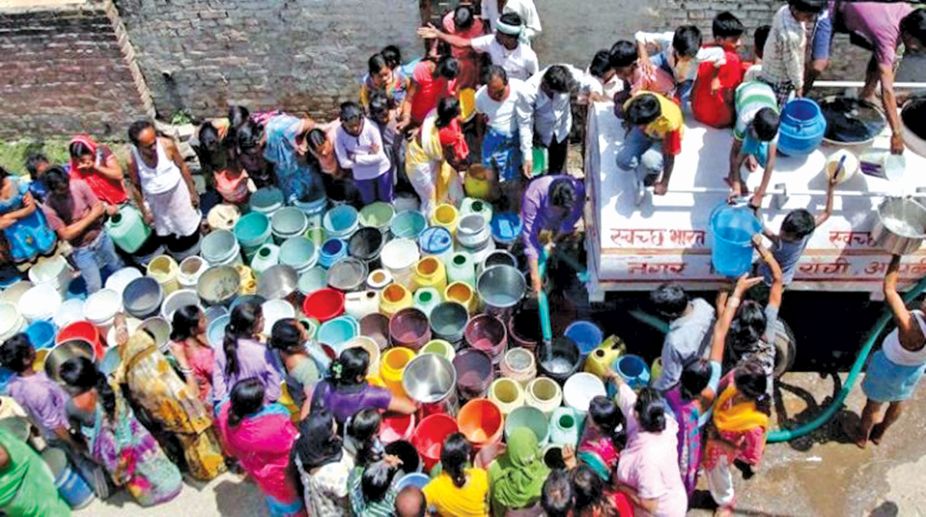More women now seeking credit, monitoring their credit scores: NITI Aayog report
NITI Aayog on Monday launched the report titled “From Borrowers to Builders: Women’s Role in India’s Financial Growth Story”.

Rep image
India is suffering from the worst water crisis in its history and millions of lives and livelihoods are under threat, the NITI Aayog has said.
It also warned that the crisis was only going to get worse and by 2030, the country’s water demand is projected to be twice the available supply, implying severe water scarcity for hundreds of millions of people and an eventual six per cent loss in the country’s GDP.
Advertisement
Currently, 600 million Indians face high to extreme water stress and about two lakh people die every year due to inadequate access to safe water, said the NITI Aayog report on Composite Water Management Index (CWMI) released on Thursday which aims to enable effective water management in Indian states in the face of this growing crisis.
Advertisement
The report ranks Gujarat at top in managing its water resources in the reference year (2016-17) followed by Madhya Pradesh, Andhra Pradesh, Karnataka and Maharashtra.
The worst states include Jharkhand, Haryana, Uttar Pradesh and Bihar.
Among North Eastern and Himalayan states, Tripura has been adjudged number one in 2016-17 followed by Himachal Pradesh, Sikkim and Assam.
In terms of incremental change in index (over 2015-16 level), Rajasthan holds number one position in general states and Tripura ranks at first position amongst Northeastern and Himalayan states, the report said.
According to the NITI Aayog report, Centre-state and inter-state cooperation were some of the key levers to help address the crisis.
“There is an opportunity to improve Centre-state and inter-state cooperation across the broader water ecosystem. Water management is often currently viewed as a zero-sum game by states due to limited frameworks for inter-state and national management.
“This has resulted in seven major disputes regarding the country’s rivers, involving 11 states, as well as limited policy coordination on issues like agricultural incentives, pump electricity pricing etc,” it said.
The report was released on Thursday by Water Resources Minister Nitin Gadkari and NITI Aayog Vice Chairman Rajiv Kumar.
Gadkari said that water scarcity was one of the biggest problems the country was facing today and that more than the scarcity of water, it was an issue of management of water resources.
He said there was a need to reward those states which were doing well in managing their water resources and also to bring in public domain the names of those states which were not managing their resources properly.
“States which have done well on water management are also the states which do well in agricultural growth rate as well. There is a direct connection between water and agricultural economy,” Gadkari said.
NITI Aayog Vice Chairman Rajiv Kumar added one could never imagine India would face such a water crisis. However, he added, the government was serious about facing this challenge and addressing it.
The Composite Water Management Index report is a step in that direction to create awareness among people and governments about the realities of this crisis, he said.
“Just like we have various media campaigns to create awareness about pollution, the time as come to take the issue of water just as seriously,” Kumar said.
The NITI Aayog said that the water management index would provide useful information for the states and concerned Central ministries and departments enabling them to formulate and implement suitable strategies for better management of water resources.
NITI Aayog CEO Amitabh Kant said the government’s policy think-tank would publish ranking of states on an annual basis in future.
Advertisement